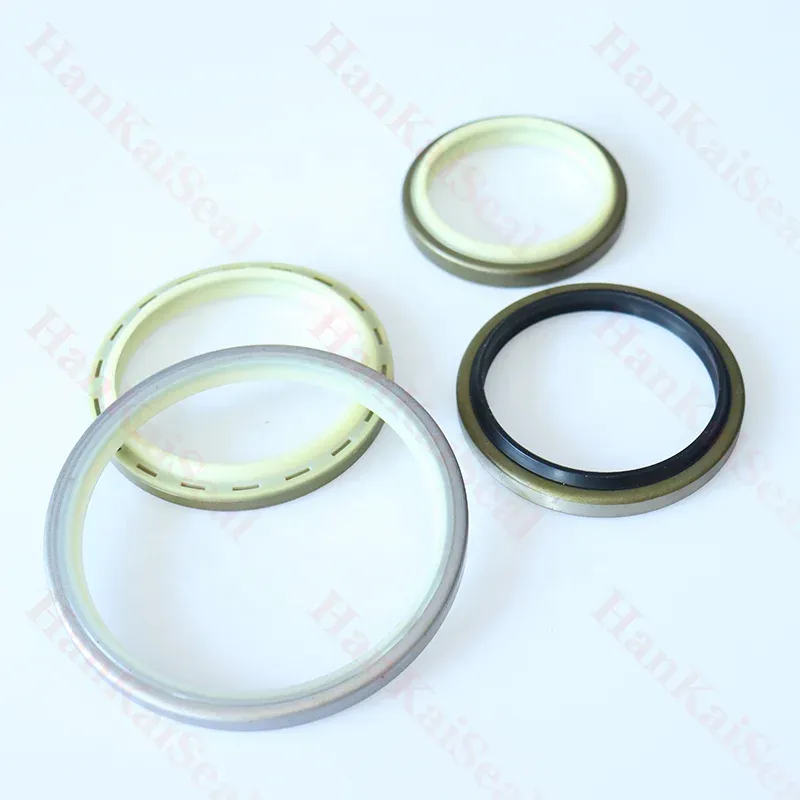Dec . 07, 2024 08:01 Back to list
Hydraulic Seal Repair Techniques for Enhanced Performance and Longevity
A Comprehensive Guide to Hydraulic Seal Repair
Hydraulic systems play a crucial role in various industries, from manufacturing to construction. They rely on hydraulic seals to ensure efficient operation and prevent fluid leaks. However, over time, wear and tear can lead to seal failure, resulting in costly downtime and repairs. Understanding hydraulic seal repair is essential for maintaining system integrity and optimizing performance.
What are Hydraulic Seals?
Hydraulic seals are designed to prevent the escape of hydraulic fluid, which is vital for the proper functioning of hydraulic systems. These seals can be found in cylinders, pumps, and hoses, and they come in various shapes and materials, including elastomers, thermoplastics, and metallic options. The type of seal used depends on the application, working pressure, temperature ranges, and the type of fluid involved.
Common Causes of Seal Failure
Seal failure can occur due to several reasons, including
1. Wear and Tear Over time, seals can wear down due to friction and exposure to harsh operating conditions, such as extreme temperatures or abrasive materials.
2. Improper Installation Incorrect installation can lead to misalignment, which places undue stress on the seals, causing premature failure.
3. Contamination Dirt, dust, and other contaminants can enter the hydraulic system, degrading the seal material and leading to leaks.
4. Chemical Compatibility Using seals that are not compatible with the hydraulic fluid can result in chemical reactions that weaken the seals.
Signs of Seal Failure
Identifying seal failure early can save time and money in repairs. Some common signs include
hydraulic seal repair

- Fluid Leaks Visible leaks around the seal area are often the first indicator of a problem. - Unusual Noises Hissing or grinding noises may signify air leaks or mechanical issues related to seal failure. - Loss of Pressure A drop in system pressure can indicate that seals are allowing fluid to escape, affecting overall performance. - Overheating Excessive heat in the hydraulic system could be a result of friction from a failing seal.
Repairing Hydraulic Seals
Repairing hydraulic seals involves a few important steps
1. Diagnosis The first step is to correctly diagnose the problem. This may involve inspecting the entire hydraulic system and identifying the source of the leak.
2. Disassembly Once the faulty seal is identified, the system will need to be disassembled carefully to access the affected area.
3. Cleaning Thoroughly clean the seal area to remove any dirt or debris that may interfere with the new seal's performance.
4. Seal Replacement Replace the damaged seal with a new one that is compatible with the hydraulic fluid and meets the system's specifications.
5. Reassembly and Testing After reassembling the components, conduct tests to ensure there are no leaks and that the system operates smoothly.
Preventative Measures
To avoid seal failure in the future, consider the following preventative measures
- Regular Maintenance Schedule regular inspections of hydraulic systems to identify potential issues before they escalate. - Use Quality Seals Invest in high-quality seals made from suitable materials for your specific application to reduce the risk of failure. - Training Ensure that staff responsible for installation and maintenance are trained and follow best practices.
In conclusion, hydraulic seal repair is a critical aspect of maintaining hydraulic systems. By understanding the causes of seal failure, recognizing the signs, and implementing proper repair and preventative measures, you can significantly extend the lifespan of your hydraulic equipment and reduce downtime.
-
TCN Oil Seal Metal Ring Reinforcement for Heavy Machinery
NewsJul.25,2025
-
Rotary Lip Seal Spring-Loaded Design for High-Speed Applications
NewsJul.25,2025
-
Hydraulic Cylinder Seals Polyurethane Material for High-Impact Jobs
NewsJul.25,2025
-
High Pressure Oil Seal Polyurethane Coating Wear Resistance
NewsJul.25,2025
-
Dust Proof Seal Double Lip Design for Construction Equipment
NewsJul.25,2025
-
Hub Seal Polyurethane Wear Resistance in Agricultural Vehicles
NewsJul.25,2025
-
The Trans-formative Journey of Wheel Hub Oil Seals
NewsJun.06,2025
Products categories
















